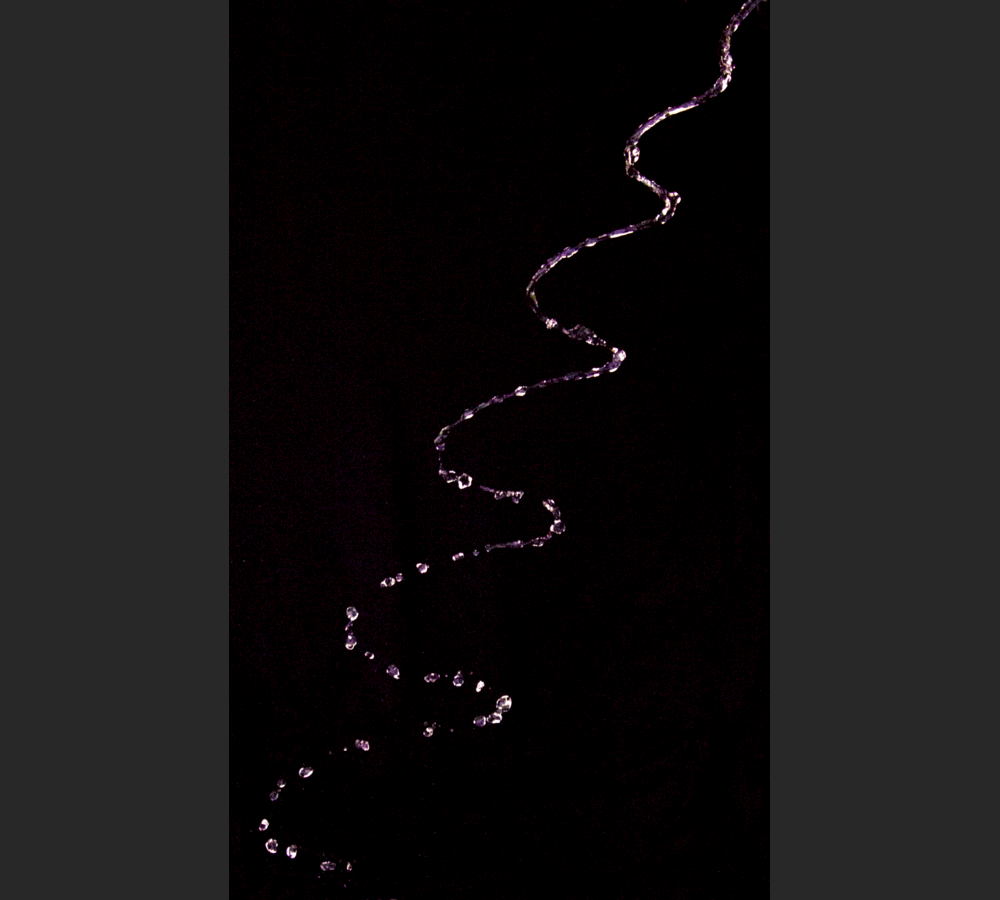By Rachel Grosskrueger, John Zeldes, Brock Derby for Fall 2015 Team First.
Read the Report
A 5/8 inch diameter water stream from a nozzle with a transverse oscillation at 24 Hz

A 5/8 inch diameter water stream from a nozzle with a transverse oscillation at 24 Hz
Previous Post
Premixed combustion of isopropyl alcohol in a glass jug forms a ‘tulip’ flame as it propagates downward through the jug, and a jet flame out the top.
Next Post
A 3/8 inch diameter water stream from a nozzle with a transverse oscillation at 23 Hz, imaged at 24 frames per second, so the flow appears to be moving upstream.
Categories
Flow Vis Guidebook
- Introduction to the Guidebook
- Overview 1: Phenomena. Why Does It Look Like That?
- Overview 2: Visualization Techniques
- Overview 3: Lighting
- Overview 4 - Photography A: Composition and Studio Workflow
- Overview 4 - Photography B: Cameras
- Overview 4 - Photography C: Lenses - Focal Length
- Overview 4 - Photography C: Lenses - Aperture and DOF
- Overview 4: Photography D: Exposure
- Overview 4 - Photography E - Resolution
- Overview 5 - Post-Processing
- Clouds 1: Names
- Clouds 2: Why Are There Clouds? Lift Mechanism 1: Instability
- Clouds 3: Skew - T and Instability
- Clouds 4: Clouds in Unstable Atmosphere
- Clouds 5: Lift Mechanism 2 - Orographics
- Clouds 6: Lift Mechanism 3 - Weather Systems
- Boundary Techniques - Introduction
- Dye Techniques 1 - Do Not Disturb
- Dye Techniques 2 - High Visibility
- Dye Techniques 3 - Light Emitting Fluids
- Refractive Index Techniques 1: Liquid Surfaces
- Refractive Index Techniques 2: Shadowgraphy and Schlieren
- Particles 1- Physics: Flow and Light
- Particles 2: Aerosols
- Particles 3: In Water
- Particles 4 -Dilute Particle Techniques
- Art and Science
- TOC and Zotpress test
- Photons, Wavelength and Color
